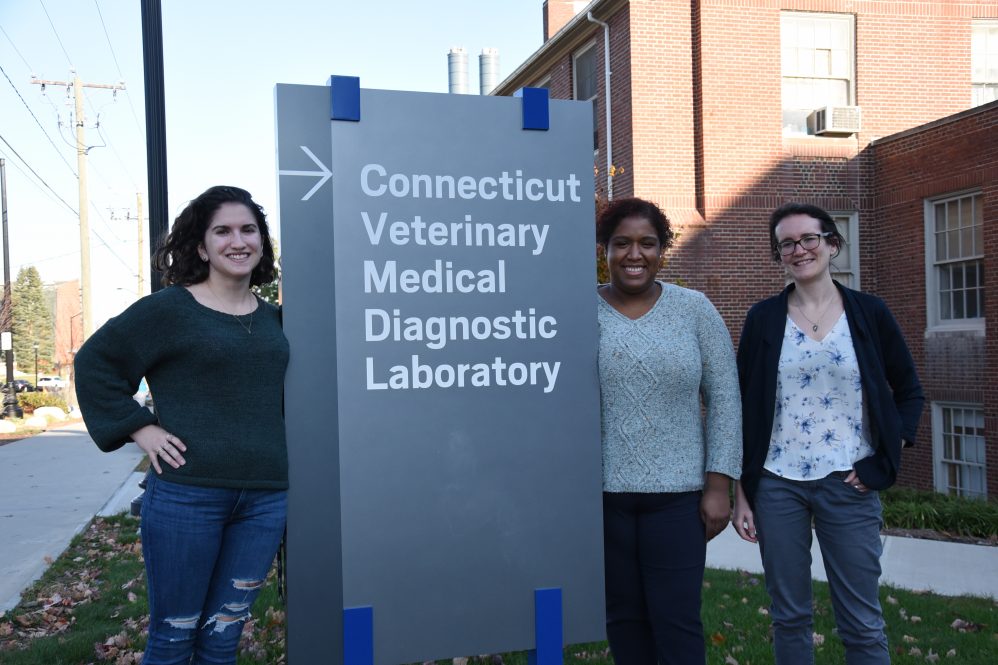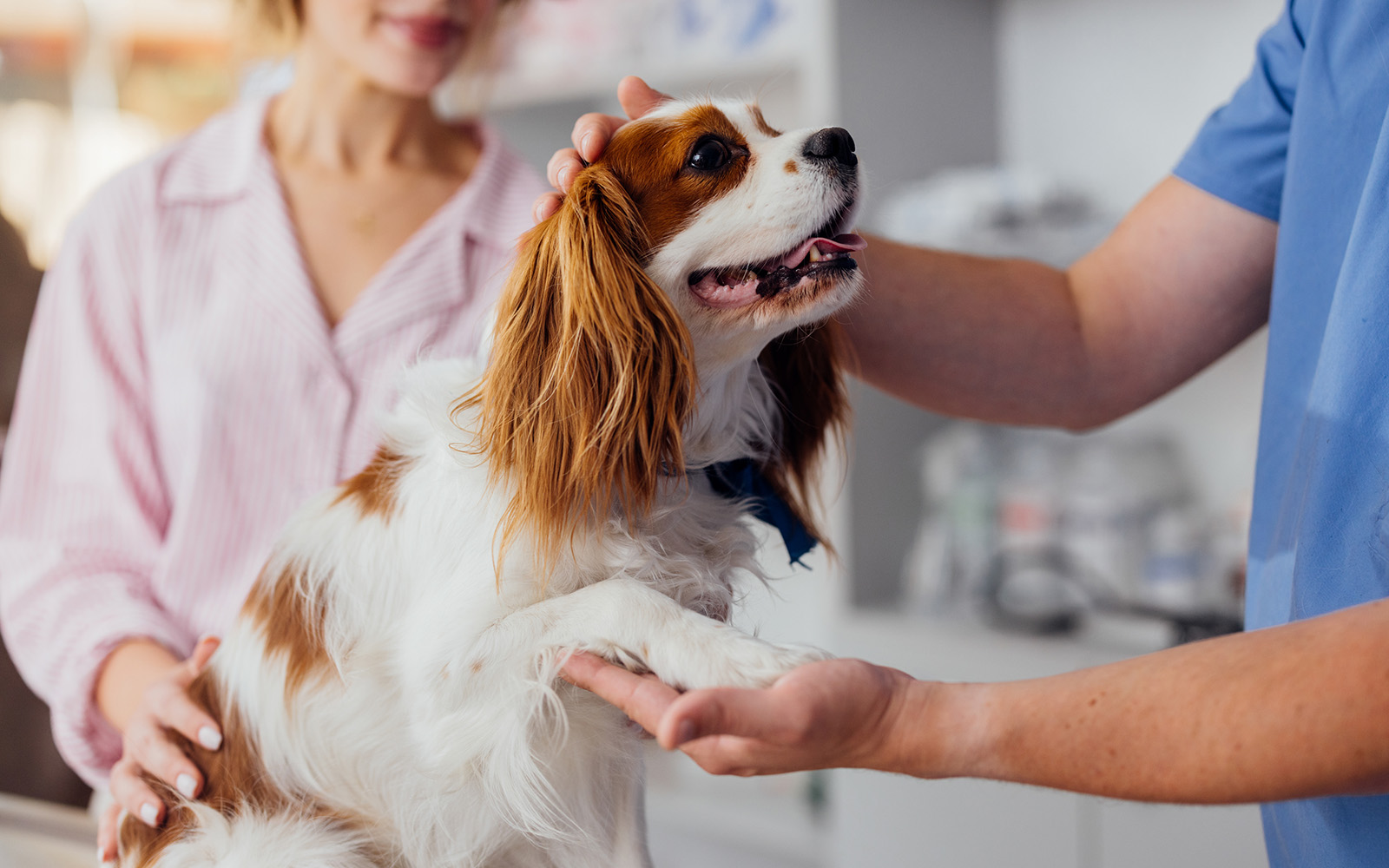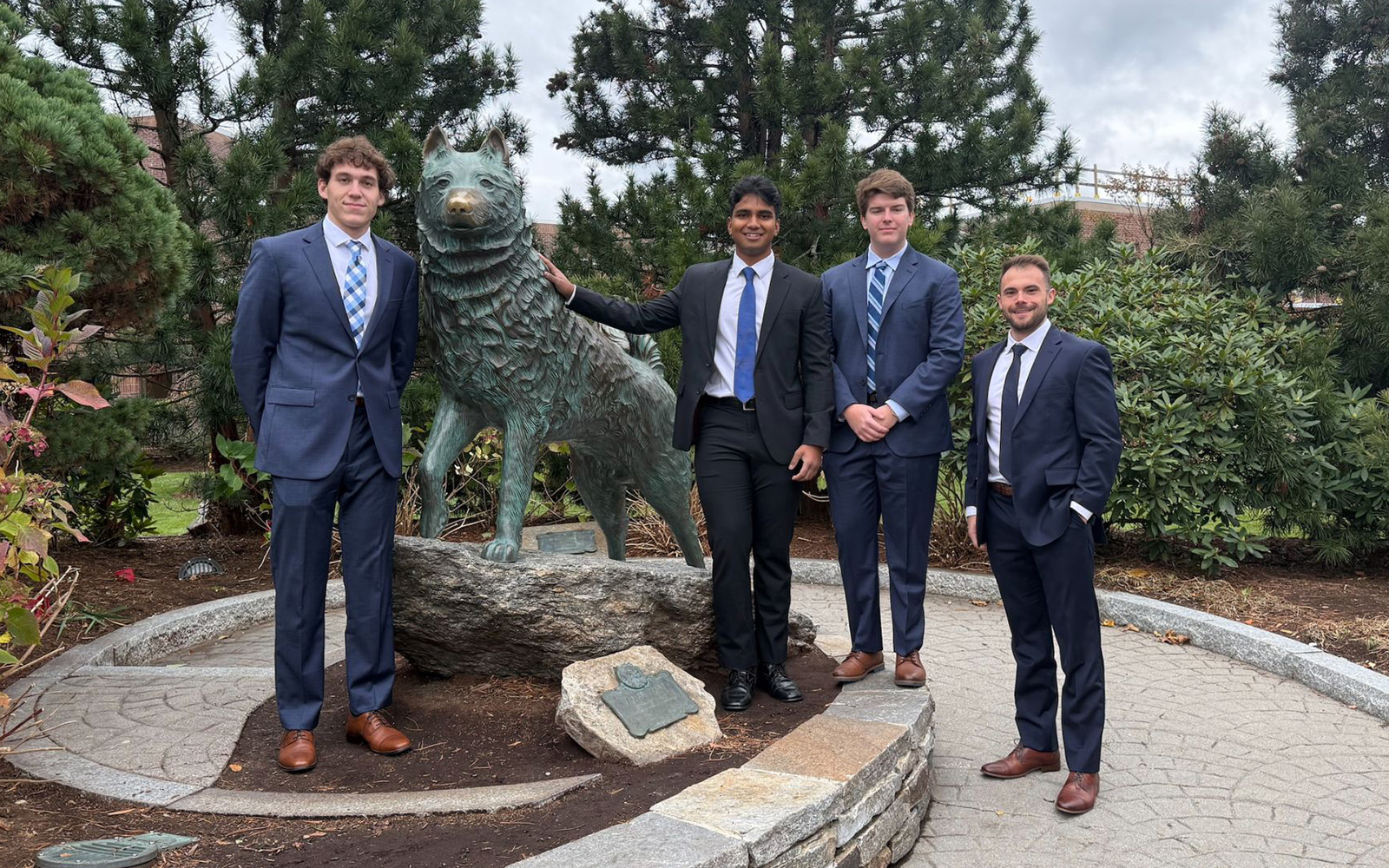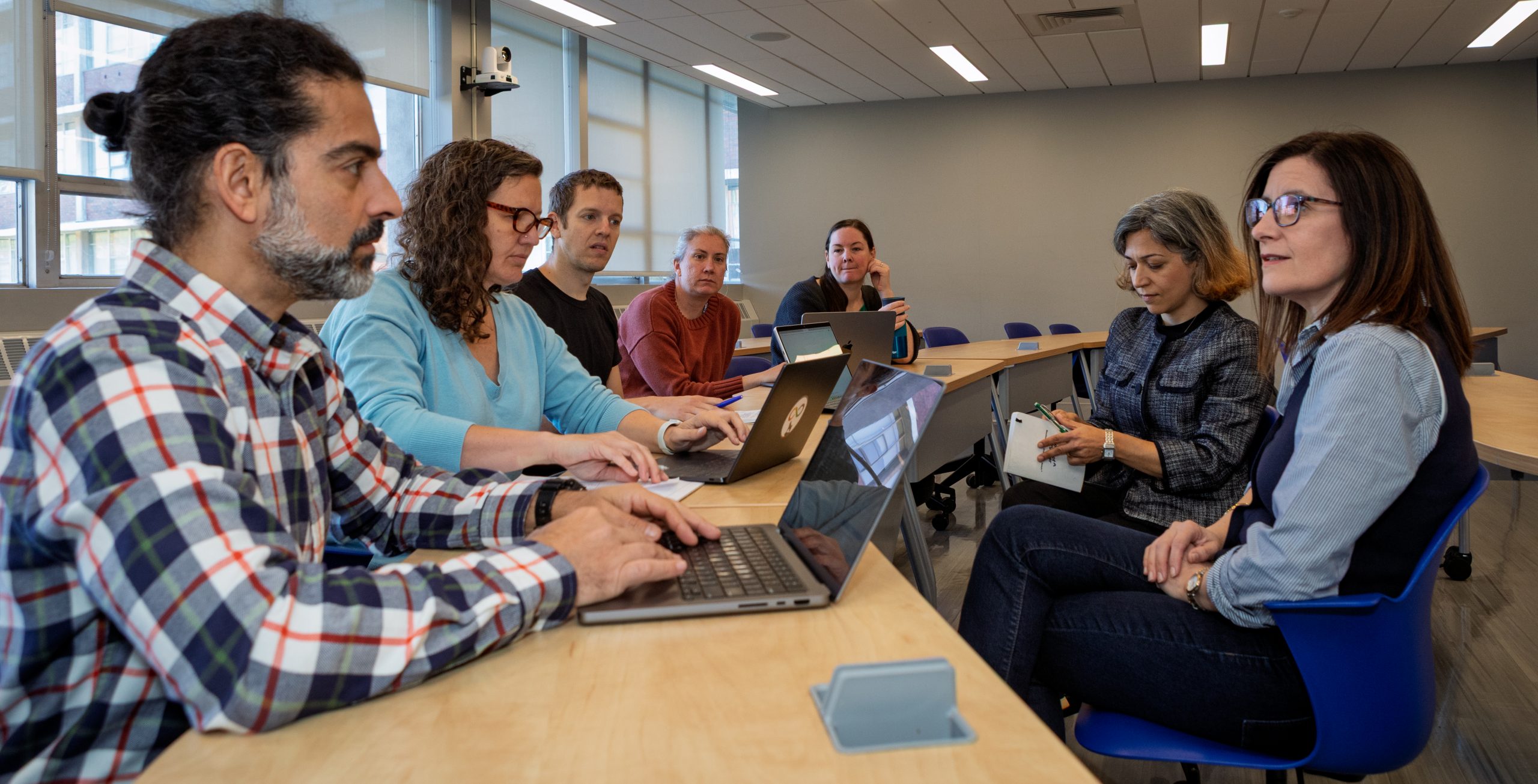The unexpected death of a beloved pet. A mystery illness in local farm animals. Investigating the death of wildlife in our backyards.
All of these events can be a major cause of concern for the people who experience them and potentially for the health of our community.
A unique program in the Department of Pathobiology and Veterinary Science serves Connecticut communities by uncovering the cause of zoonotic diseases, all while offering veterinarians the opportunity to gain real-world professional specialty training. In the Residency and Graduate Program in Anatomic Pathology, veterinarians train under expert faculty pathologists on cases involving farm animals, household pets, wildlife, and aquatic animals.
The 50-year old program housed in the College of Agriculture, Health and Natural Resources has existed in its current form for about 15 years. The three-year program provides the veterinarian residents with comprehensive training in anatomic pathology while they complete a master’s degree in pathobiology. It is the only veterinary professional specialty training program offered by the University, and it prepares residents to pass the examination of the American College of Veterinary Pathologists to become board-certified veterinary pathologists and to work in a variety of industries or academia.
“When they [the veterinarian residents] come to the program, no matter where they come from, the work that’s getting done is work for the people of Connecticut,” says Salvatore Frasca, research professor in the Department and former director of the Connecticut Veterinary Medical Diagnostic Laboratory (CVMDL).
Most veterinary residency programs are associated with veterinary schools. UConn’s program, however, is not. The case material residents work with comes directly from the CVMDL. The CVMDL is the only American Association of Veterinary Laboratory Diagnosticians accredited laboratory and member laboratory of the National Animal Health Laboratory Network (NAHLN) in New England. It is also one of the most active service centers in the UConn Extension program.
The pathology residents perform autopsies on animals, also known as necropsies, that are submitted to the CVMDL from all over the state and often from outside Connecticut as well.
“The CVMDL could not function as it does without the pathology residents, and the residency program would not be able to function as it has without the CVMDL,” says Frasca. “The two have grown together in a very synergistic way.”
Graduates from the program have come from, and go on to work in, all corners of the world – including Chile, Kenya, Japan, France, and Mexico.
“It’s one of the most diverse programs we have at the University,” Frasca says. “We get individuals from all over the world coming to Connecticut for this program. They go on to represent UConn all around the globe.”
Dr. Francisco Carvallo-Chaigneau, who is originally from Chile, first heard about the program while visiting his brother, who was a student at UConn. There he connected with professors in the Department of Pathobiology and Veterinary Science.
“For me it would be an honor to work with all these research stars,” Carvallo-Chaigneau says.
He kept in touch with the UConn faculty and in 2008, he started the residency program.
“The UConn program was unique,” Carvallo-Chaigneau. “That’s where I really learned pathology. I knew pathology, but then I learned it. I was able to apply it in a much more practical way. We knew we could trust them [the faculty]. We knew we could count on them. It was not just a distant student-teacher relationship. For me it was perfect, beginning to end.”
After completing the program, Carvallo-Chaigneau worked briefly for a pharmaceutical company before moving into academia. He is currently a clinical associate professor in veterinary pathology at the Virginia Tech College of Veterinary Medicine.
Dr. Vanessa Schumacher graduated from UConn with her bachelor’s degree in 2003. During her time as an undergraduate, she worked in the histology lab in the CVMDL. That experience showed Schumacher first-hand what the residents did.
“That was just fascinating to me, how these veterinary pathologists could really find these clues in a tissue sample and make diagnoses that could help farmers to better take care of their herds or people to get some closure about the death of a pet,” Schumacher says. “I thought it was really exciting and the people were really engaged, and that spoke a lot to me.”
During her time at UConn and in veterinary school, Schumacher developed an interest in fish pathology and wildlife medicine – something she knew she could pursue at UConn.
Schumacher graduated from the residency program in 2010. After spending a few years working on zoo animal pathology, Schumacher now leads pathology at Roche, a Swiss pharmaceutical company.
Schumacher and her team look at samples from animal research studies. They characterize in-vitro systems and animal models.
“It’s really helpful for pathologists to give input as to the structural and the functional aspects of those systems to see if they are relevant for understanding the in-vivo form as well,” Schumacher says.
Schumacher says her time in the program at UConn helped her develop the independence and problem-solving skills she uses daily now and the connections she has maintained for more than 10 years since.
“What really stands out are those interactions with the people and the passion of the colleagues for pathology,” Schumacher says.
Dr. Emily Reinhardt completed the program in 2020 and is now a senior pathologist with the CVMDL and an assistant clinical professor in the Department of Pathobiology and Veterinary Science.
Reinhardt says one thing that attracted her to the UConn program was that residents get to work on cases from the time they walk in the door until they make a diagnosis. Other programs associated with veterinary schools tend to get cases from animal hospitals where someone has already made an assessment, or veterinary students do most of the hands-on work.
“You get to be more connected to the material,” Reinhardt says. “You get to see the raw pathology. For me that was a big draw.”
Reinhardt says the program not only prepared graduates to pass the board exams to become certified veterinary pathologists, but to be good ones.
“They always told us: ‘We want you to pass the board exams, but we also want you to be successful pathologists,’” Reinhardt says. “It’s a wonderful program, not just because it prepares us for board exams, but it will really prepare you for the workforce as a pathologist.”
Follow UConn CAHNR on social media



